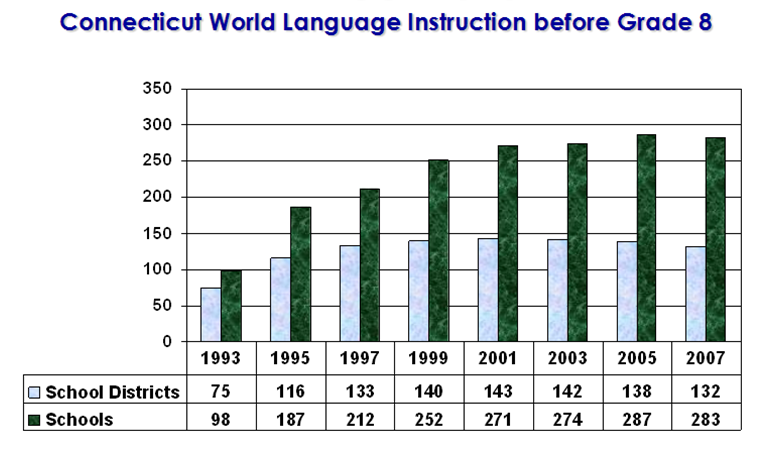World Languages Being Cut by Elementary Schools, Despite Benefits
/
This month, the Windsor school board voted to eliminate two world language teachers at the elementary school level, which put an end to the district's elementary world language program, in a budget-cutting move. A month earlier, the school board in Newington decided to delay the introduction of Spanish in lower elementary school grades in order to reduce the budget for the coming year.
Despite studies that have shown that language instruction beginning at the ele mentary school level provides numerous benefits for students, ranging from critical and creative thinking to improved performance on standardized tests and better job prospects, school districts in Connecticut appear to be cutting back, although the state Department of Education does not have recent data to provide a clear picture of what is occurring. The most recent data dates back to the 2007-08 school year.
mentary school level provides numerous benefits for students, ranging from critical and creative thinking to improved performance on standardized tests and better job prospects, school districts in Connecticut appear to be cutting back, although the state Department of Education does not have recent data to provide a clear picture of what is occurring. The most recent data dates back to the 2007-08 school year.
A policy statement by the American Council on The Teaching of Foreign Languages earlier this year stated that “an early start to learning a second language, programs of immersion or dual language immersion, and long learning sequences show strong results in helping all learners” and outlines how standards-based language learning does the following: develops literacy and numeracy, prepares learners in the STEM (Science, Technology, Engineering and Math) areas, engages learners through practical applications for special purposes and strengthens college and career readiness.
According to the U.S. Department of Education, only 30 percent of American high school students are enrolled in foreign language classes, and only 25 percent of American elementary schools even offer foreign languages. The American Council on the Teaching of Foreign Languages published an alignment of the National Standards for Learning Languages with the Common Core State Standards, adopted in Connecticut and many other states. The guidelines include standards for reading, listening and viewing as well as writing, speaking and visually representing.
The guidelines also indicate that research demonstrates that “as students come to understand how language works through their learning of a second or third language, their understanding of and attention to language conventions and functions expands and has an impact on applications in their first language.”
Data on the SDE website – now six years old - indicates that the number of Connecticut schools providing world language instruction before grade 4 increased from 14 in 1993 to 85 in 2007. The number of school districts in the state with world language in the early grades increased from 6 to 40. Expanding the report to include world language instruction before grade 8, the number of schools grew from 98 in 1993 to 283 in 2007 and the number of school districts increased from 75 to 132. Data after 2007-08 is not readily available. 






























